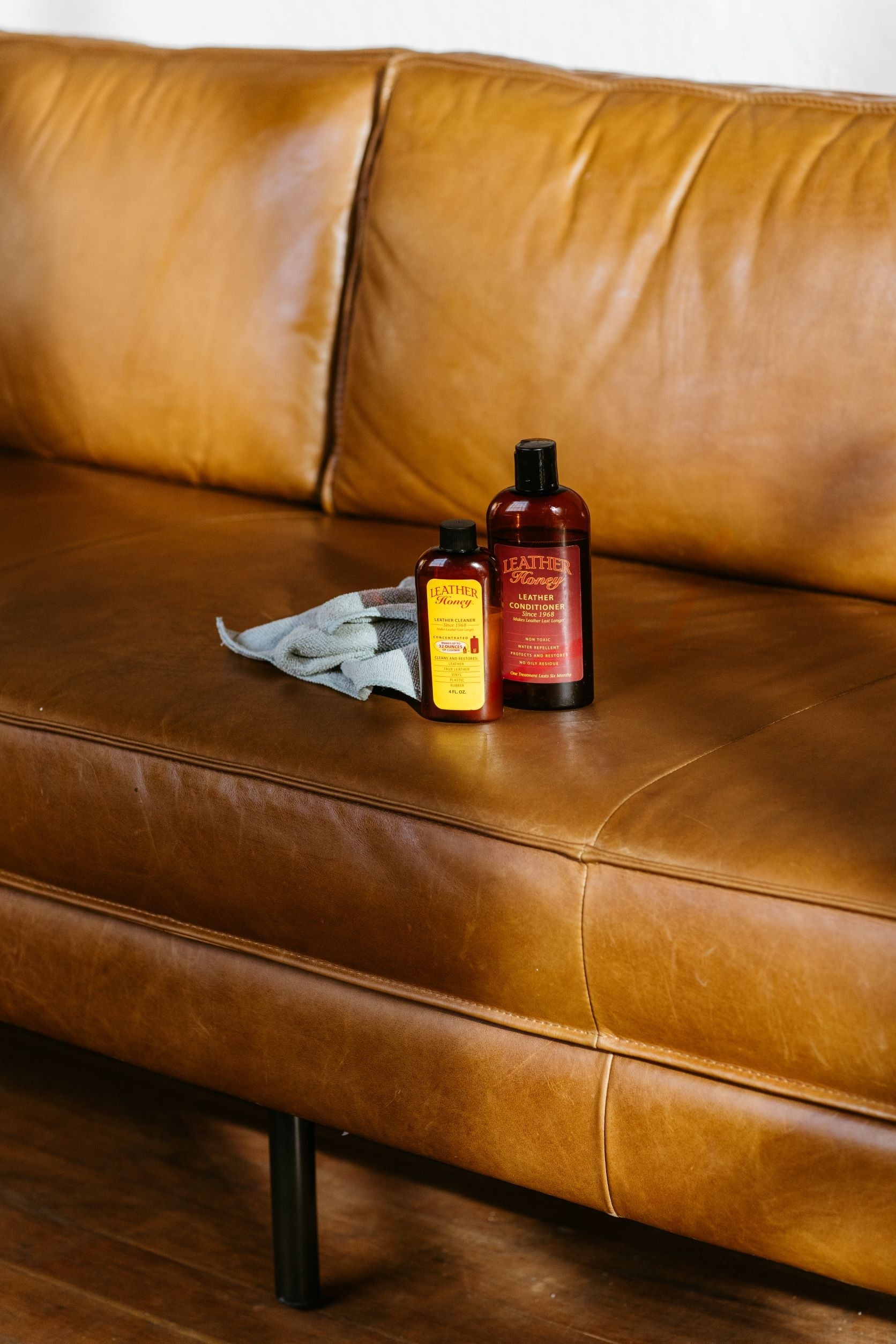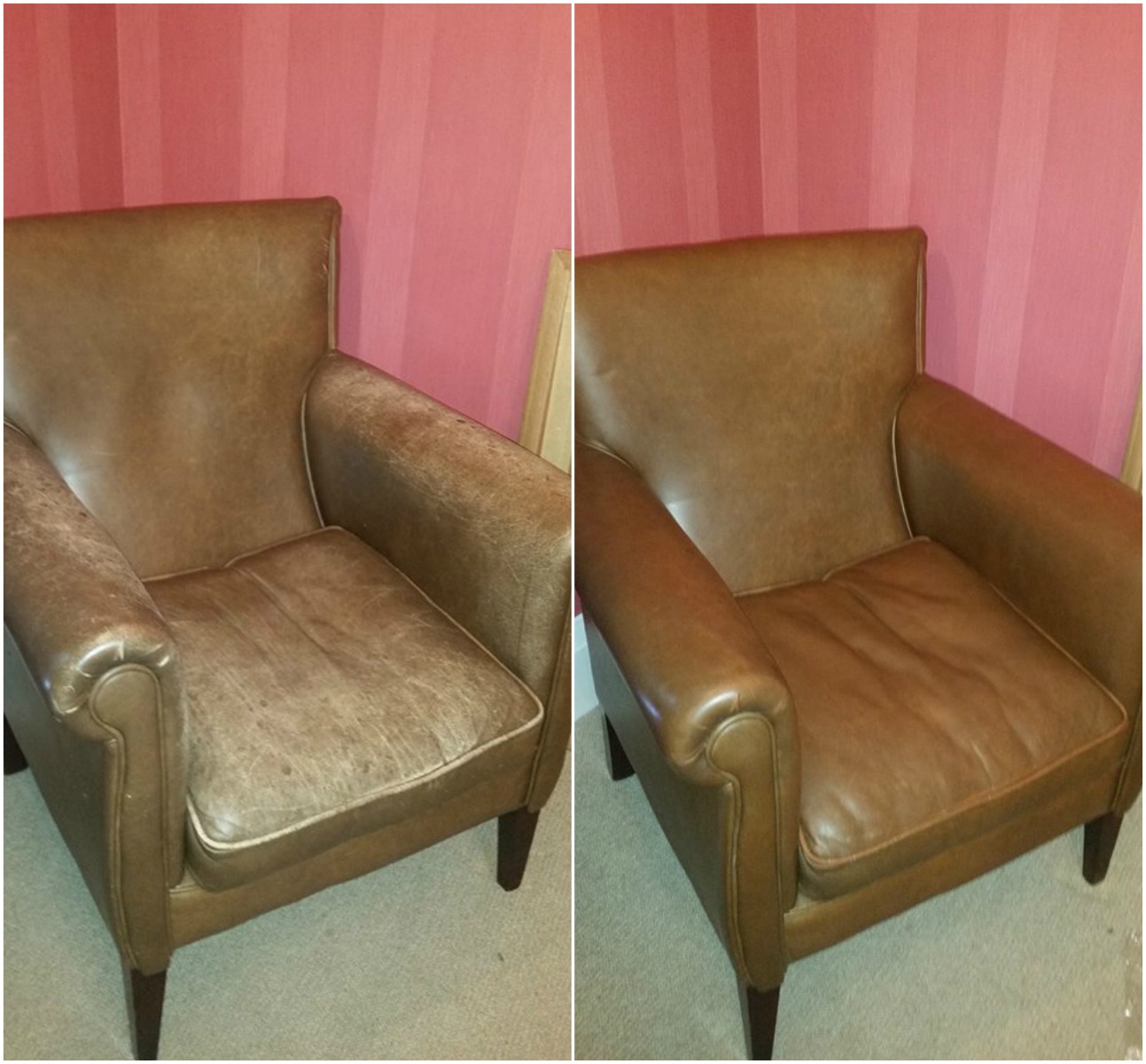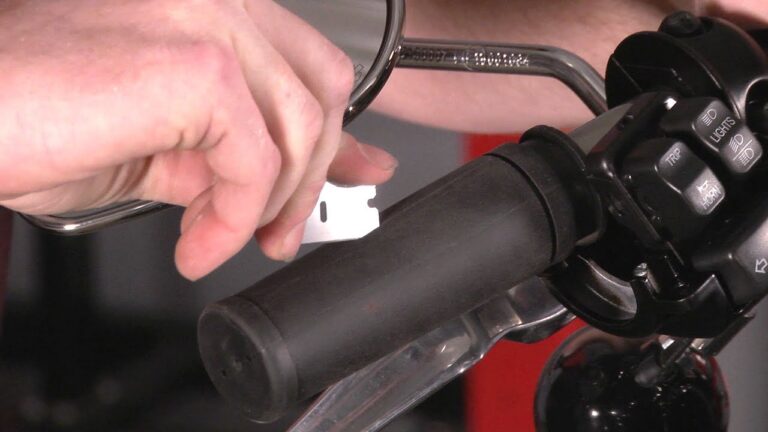Restore faded leather by cleaning it with a leather cleaner and conditioning it with a high-quality leather conditioner. Avoid direct sunlight and repeat treatment as necessary to keep the leather vibrant.
Leather furniture and accessories can lose their luster over time, becoming dull and worn. Maintaining the elegance of leather requires periodic care to revitalize its appearance. Exposure to sunlight, wear and tear, and the absence of proper conditioning can cause leather to fade and crack.
To tackle this issue effectively, knowing the right restoration techniques is essential. A regular cleaning routine followed by the application of a leather conditioner can breathe new life into faded items. This process not only restores the leather’s natural sheen but also protects it from further damage. Implementing these simple steps ensures your leather goods remain as impressive as the day you bought them.
Introduction To Leather Restoration
Faded leather can make your furniture or clothing look old and worn. Restoring its original color makes it look new again. This fix also protects the material from further damage. Think of restoration as giving your leather items a fresh start. It’s like a second life for your leather goods.
Over time, sunlight and use can dull leather’s appearance. But with the right care, you can reverse this. Not only does restoration improve looks, but it also increases durability. Your items become more resilient to daily wear and tear. Plus, you’re saving money by not buying new.

Credit: www.leatherhoney.com
Assessing The Condition Of Faded Leather
Restoring faded leather depends on the type and damage level. Identifying the type of leather is crucial. Furniture leather differs from clothing leather. Care routines vary accordingly.
Next, assess the damage. Sun exposure and dryness are common culprits. Light fading may need simple treatments. Deep discoloration can be tricky.
Set expectations right. Full restoration isn’t always possible. Color may improve, but aging signs can remain. Professional advice might be needed for severe fading.
- Aniline leather – soft and natural-looking.
- Semi-aniline – light protective coat.
- Pigmented leather – durable, consistent color.
Preparing For The Restoration Process
Restoring faded leather requires specific materials and tools.
Firstly, compile a list of essential items: leather cleaner, conditioner, soft cloths, and sponges.
Gloves protect your hands, while eye protection is advised.
Clean the leather with a trusted cleaner to remove dirt and oils. Use a clean cloth.
Gentle brushing reaches into creases.
Before applying the main products, test on a small, hidden spot.
Let it dry.
Check for color changes or damage.

Credit: m.youtube.com
Step-by-step Leather Restoration Techniques
Restoring faded leather starts with hydration. Use a quality leather conditioner to reintroduce moisture. Apply the conditioner in a circular motion. Let the leather absorb it fully before moving on.
Next, consider the leather dye or pigment. Choose a shade matching your item. Apply dye with a sponge or cloth. Even coverage is crucial for a uniform look. Allow it to dry completely.
Finally, it’s time to seal and protect the leather. Use a leather sealant for this step. It adds a protective layer. This keeps your leather safe from future fading and damage.
Maintenance And Care Post-restoration
To ensure your leather stays lively post-restoration, establish a regular cleaning regimen. Use a soft cloth and approved leather conditioner to nurture the material. Your items will retain their suppleness and shine.
Keep leather away from direct sunlight and heat sources. These can cause fading and drying. Excessive moisture and sharp objects also pose risks. Be mindful of your leather’s surroundings.
Deciding between professional care and DIY upkeep? Experts offer comprehensive services, but at-home care can be practical and cost-effective. Consider your skill level and the leather’s condition when choosing.
Common Mistakes And Troubleshooting
Restoring faded leather requires care. Applying too much product can lead to more trouble. Use just enough to cover the leather evenly. Avoid soaking the leather; it can damage it.
Notice streaks or uneven coloring? This is often due to uneven application. Gentle buffing with a soft cloth may fix this. Sometimes, a second, lighter application helps make the color even.
Leather restoration can be tricky. Professional help may be needed if problems persist. Seek experts especially for valuable or antique items. Their expertise ensures the best care for your leather.

Credit: www.furnitureclinic.co.uk
Frequently Asked Questions Of How To Restore Faded Leather
Can You Restore Color Of Faded Leather?
Yes, restoring the color of faded leather is possible using specialized leather dyes or recoloring balm. It’s crucial to clean the leather thoroughly before applying the product for the best results.
How Do You Fix A Fade In Leather?
Clean the leather with a mild cleaner to remove dirt. Apply a matching leather dye to the faded area. Let it dry and buff gently. Finish with a leather conditioner to restore moisture and protect the surface.
Can You Fix Sun Damaged Leather?
Yes, you can fix sun damaged leather. Start by cleaning the surface, then condition it to restore moisture. For severe damage, use a leather repair kit or seek professional restoration services.
How Do You Restore Light Colored Leather?
To restore light-colored leather, start by gently cleaning it with a soft cloth and mild soap. Apply a specialized leather conditioner, then buff it out to rejuvenate the leather’s natural color and shine. Always test products in an inconspicuous area first.
Conclusion
Restoring faded leather revitalizes your cherished items, ensuring they last for years. Follow the steps outlined for a professional finish at home. Remember, consistency is key to maintaining leather’s luster. Embrace these techniques and watch your leather pieces transform from dull to dazzling.
Ready, set, restore!





